Bear Mace – Valuable Tool or Worthless Weight?
Unless you’re into rucking for fitness, packing extra weight on when you head to the trail is about as useful as burnt coffee. Just, like… why would you do that to yourself? So you may hold that can of bear mace awhile and give it a few hoists trying to decide if it’s necessary.
It makes sense to be critical of every ounce. Whether you’re day hiking or doing a multi-day backpacking trip, intentionality is always a good thing. So, let’s get to know this piece of gear and help you decide whether or not it should be included in your weight calculations.
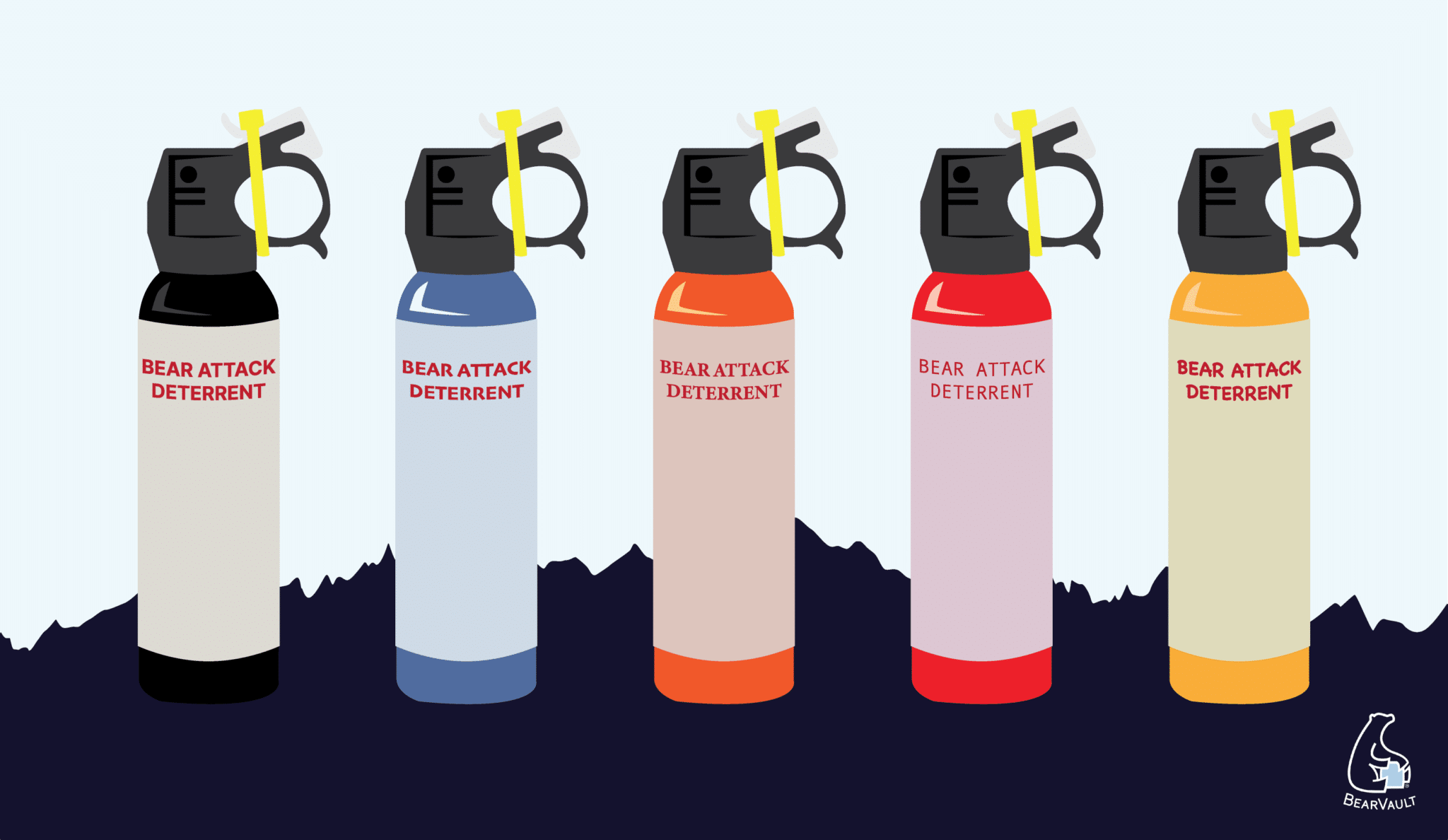
What is Bear Mace?
The term “bear mace” refers to an aerosol formula used to stop a charge from an angry bear. It comes in a pressurized can and is easily obtained online or in outdoor stores.
Are you ready for some big words?
Its active ingredient, oleoresin capsicum, includes a variety of capsaicinoids. All 5 of the major capsaicinoids, including the most potent, capsaicin, are derived from plants in the genus Capsicum.
If that industry jargon made your eyes cross, it’s okay. Just understand that the main ingredient is oil taken from really hot peppers!
Speaking of industry jargon, you may be interested in knowing that using ”bear spray” instead of “bear mace” is more common. That could help in future research and shopping. It also may make you sound cooler when you talk about your adventure with other outdoorists!
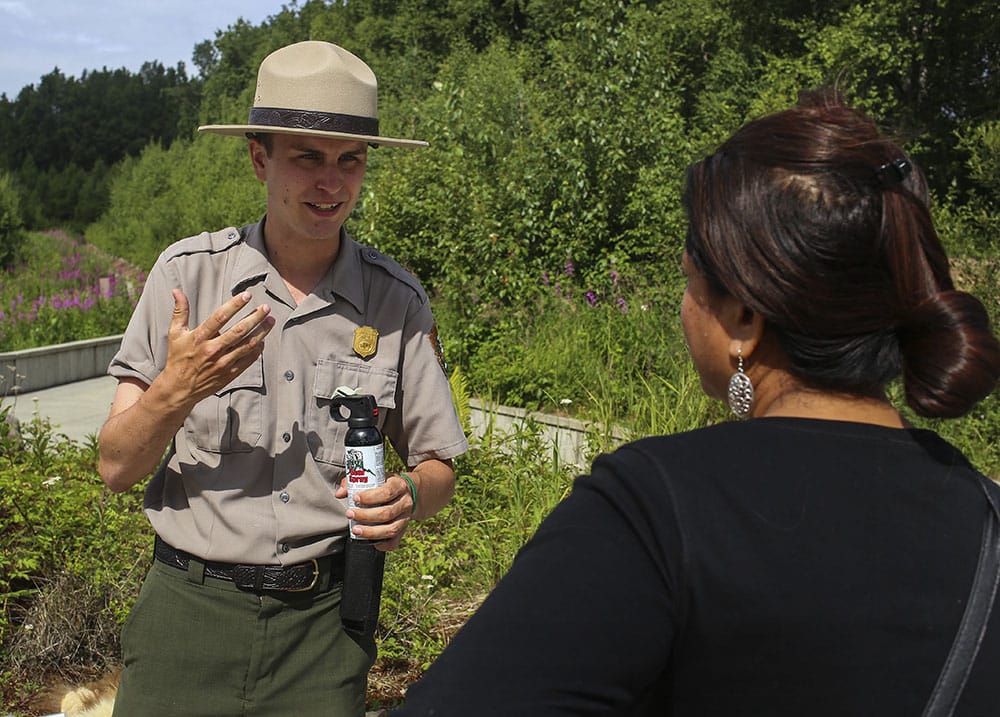
A National Park Ranger explains proper bear spray technique – NPS
Does Bear Mace Actually Work?
When used correctly, bear spray is extremely effective in deterring angry bears. When the original spray, developed in the ’60s for aggressive dogs, was tested on captive brown bears, the results were so encouraging the tester pursued developing a bear-specific cocktail. Since then, it’s been consistently demonstrated that spray is a steady, reliable method of protection in bear encounters.
One study, in particular, focused on collecting data over decades in Alaska. Both brown and black bear information is included. 90% of black bears and 92% of brown bears ceased aggressive behavior when spray was used at close range.
And those remaining percentage points? There were a few times a brown bear managed to inflict slight damage before the spray incapacitated it. In the entire study, only minor injuries (nothing more than stitches) were reported.
There were also a few cases of spray misuse that resulted in bear encounters. You don’t want to be that guy… so let’s look at how to use bear spray properly. And what NOT to do with it.
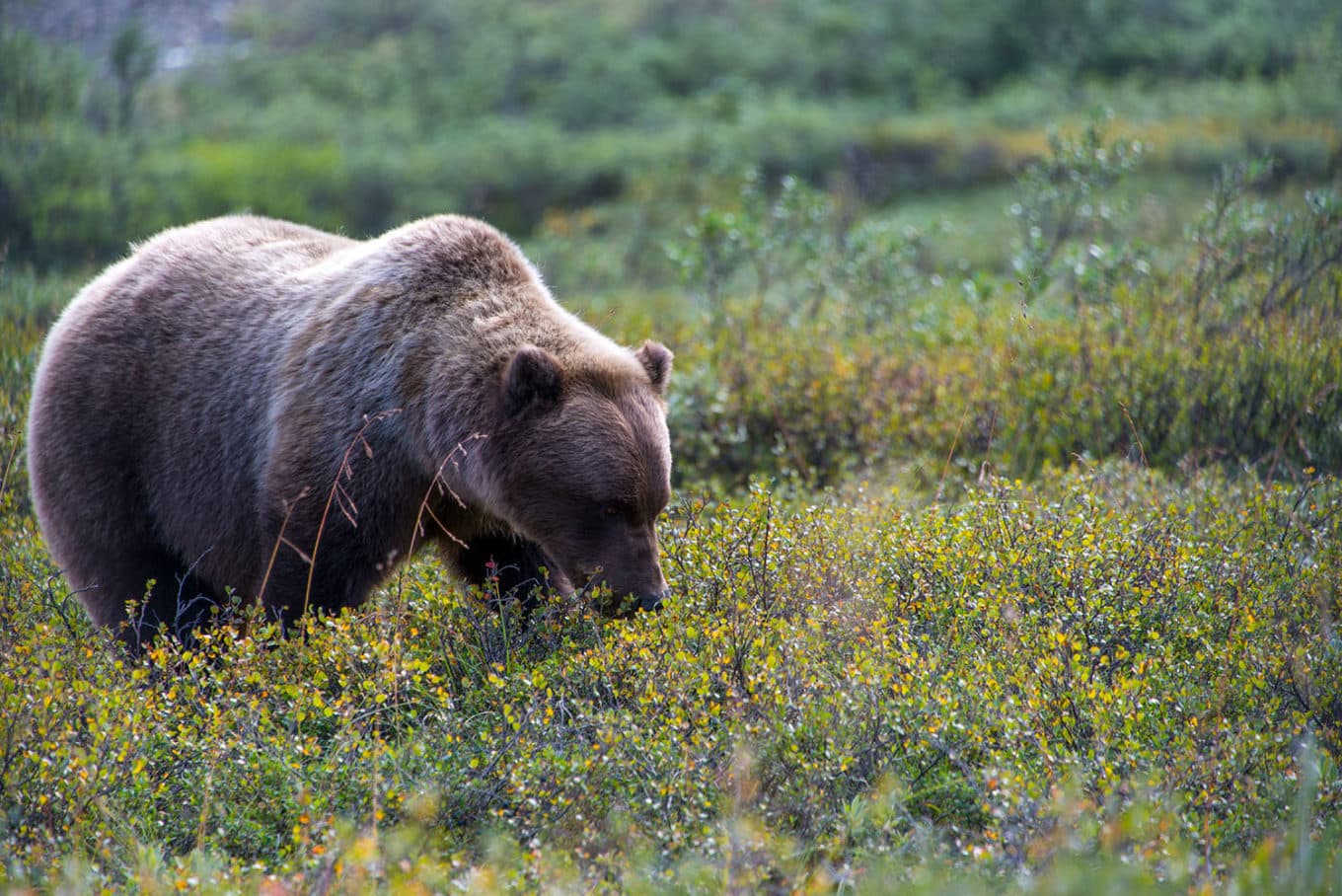
How To Use Bear Mace
First, it’s important to understand that bear spray isn’t going to do you any good if it’s buried in your pack.
Statistically speaking, most encounters are surprises. You may round a bend or top a crest and startle a foraging bear. That’s not the time to be fumbling for your spray!
Any time you’re on the trail or anywhere a bear encounter is possible, you should have your spray handy. You can buy a holster to use or clip it to a strap on your pack. Just know where it is and how to access it… quickly.
Bear spray is for close encounters.
Just seeing a bear doesn’t mean it’s time to go crazy. You need to evaluate the bear’s behavior first.
- If the bear is moving away, stand still and let it.
- If the bear is standing still and looking at you, it’s probably evaluating the situation. Stand still and talk calmly in a deep register.
- If the bear is swatting the earth, clacking its teeth, and huffing, it’s irritated. Stand firm and hold your spray out in front of you to prepare for a close encounter.
- If the bear charges, wait until it’s within range of your spray (25-30 feet). Then, deploy your spray in a side-to-side motion, creating a wall of particles between the two of you.
It’s important to take note of any wind in these situations. There’s always a risk of blowback, so keep that in mind. Of course, you can’t change the direction of the wind. But factor it into your decision-making. Keeping your wits about you is crucial.
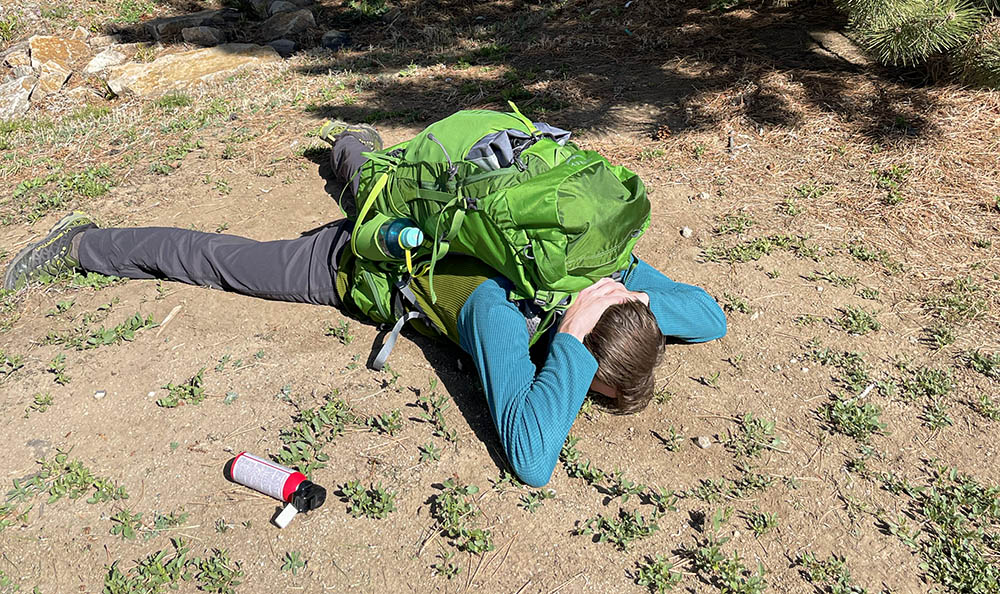
If a DEFENSIVE bear makes contact and bear spray is ineffective – stay still and wait
Bear spray is not a bear repellant.
Those percentage points that brought down the overall effectiveness of bear spray in the Alaska study? They included multiple cases of people using bear spray like it was a repellent.
Don’t use your bear spray as a perimeter defense. Don’t douse your tent, thinking the smell will keep bears away from it. It’s not a camp fogger for bears! If you do that, the best-case scenario is that you now have an empty can… which isn’t good. The worst case is that the faint pepper aroma carried on the breeze actually attracts attention.
So just don’t. Please?

Weighing the Cost & Benefits of Bear Mace
Now that we’ve gotten all that out of the way let’s get back to the topic at hand.
Is the weight of a can of spray worth it?
Bear spray canisters typically weigh in at 7.9 – 13.2 ounces. So, right off the bat, you’re not talking about adding a ton of weight. But how does it compare with other bear deterrents?
Air Horn – 0.13 lbs (2.08 oz)
Bear Bell – 0.07 lbs (1.12 oz)
Bear Defense Gun – 1.5 lbs – 4+ lbs
Noisemakers are definitely lighter, but the jury is out on how effective they are. Bells emit sounds no louder than the ones you make yourself. The sound of a horn can reach up to half a mile, so you can certainly hope that it will alert a bear of your presence and give it a chance to move away from you. But if it chooses to approach instead, you’re out of luck.
If bear defense guns interest you, and their weight isn’t a turn-off, doing some more research would be time well spent.
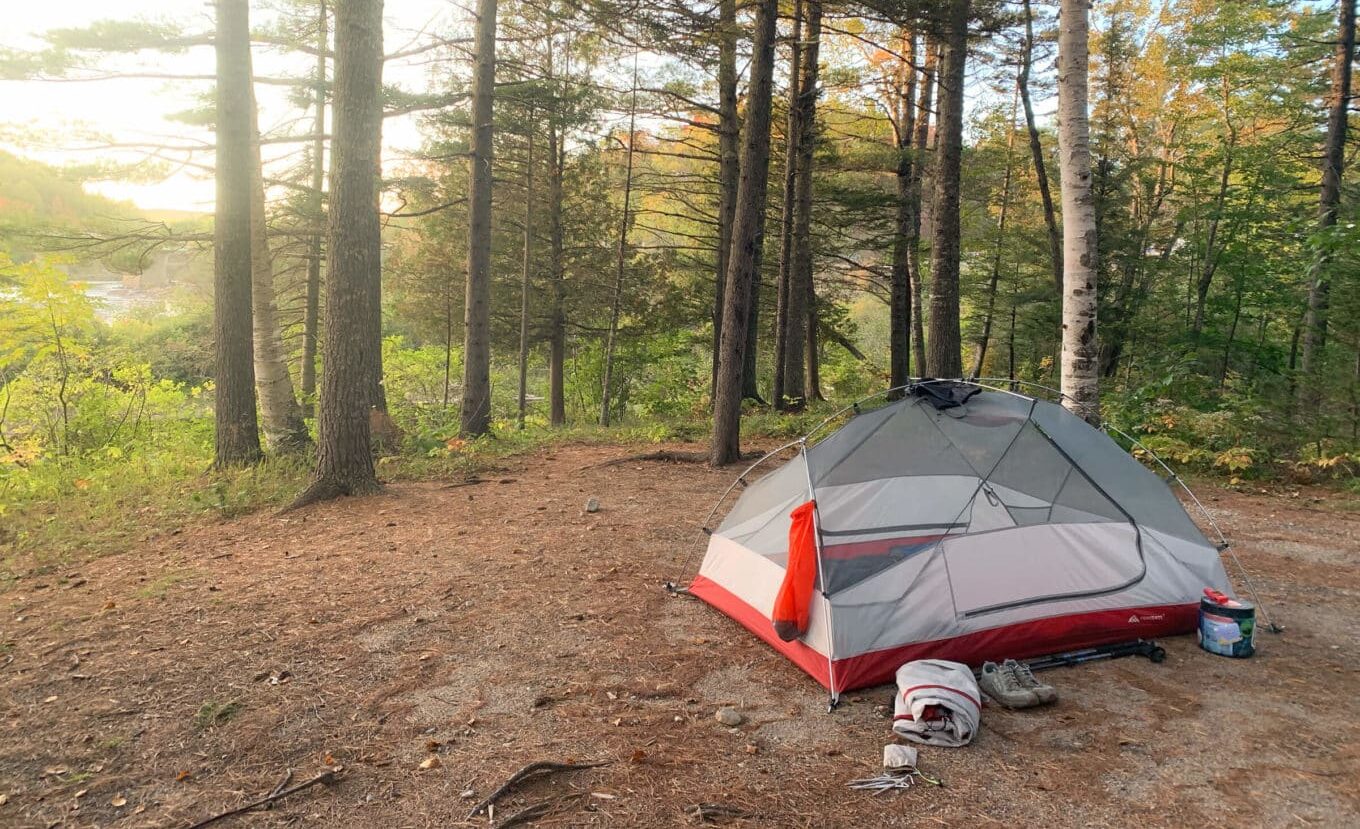
Where to Buy Bear Mace
Bear spray is easy to purchase and can be shipped within the contiguous 48 states. It’s also readily available at many brick-and-mortar outdoor stores. Check your local outdoor gear store, or have it shipped to your door.
What Else Do I Need For Bear Safety?
While most bear encounters happen by stumbling onto them while hiking, it’s important to take precautions should THEY stumble upon YOU. When you set up at camp and become stationary for a while, you don’t want to attract bears. Proper gear and preparation can help with that.
1. Choose Your Site
Stay away from obvious food sources, like berry patches. Also, look for signs of bear activity. Claw marks on trees, hair left in the brush, and fresh scat are good indicators that you should move along. Put a few more miles in and see what you find down the trail. It’s also nice to have some distance between your spot and the treeline or any heavy underbrush. An extra couple of seconds to react to approaching wildlife could be valuable.
2. Store Your Food
Sorry to burst your bubble, but your food is the most attractive thing about you. To a bear, anyway. They’re not picky, either, so remember that it also finds your toothpaste, deodorant, and empty wrappers enticing. Make it all off-limits by storing it in a bear-proof canister and placing it at least 70 paces away from camp. Bear canisters aren’t smell-proof, so they may still draw attention, which is why they shouldn’t buddy up to you in the tent. You can let the bears check them out while you keep a safe distance.

3. Leash Your Dog
Dogs are a serious issue when it comes to bear conflicts. A loose one running ahead on the trail might cause a problem where there wouldn’t have been one. Just imagine your pup startling a bear and acting all tough, only to turn tail and run back to you for protection. There have been many such cases, so keep them leashed to minimize risks to them and you.
Bear Mace Wins Hands Down
You can do a lot of things right and still get enough wrong to necessitate defensive action. It’s even possible to get EVERYthing right and face a rogue bear that doesn’t behave in a typical fashion. There’s simply no way to predict an animal’s actions 100% of the time.
When I hit a Colorado trail with my kids, I want to know that I’ll be able to do more than shout and clap my hands at a bear. Would that be enough? Maybe. But to me, the benefits of strapping on an extra 12 ounces far outweigh the extra effort required.
Author Profile

Jessica Cockroft
Jess merges her passion for words and an insatiable longing for adventure as an outdoor freelance content writer and marketer. When she’s not busy stringing words together you’ll probably find her planning another camping trip for her crew of kids or taking care of the homestead. You can find her on LinkedIn and Instagram, as well as on her own website.




